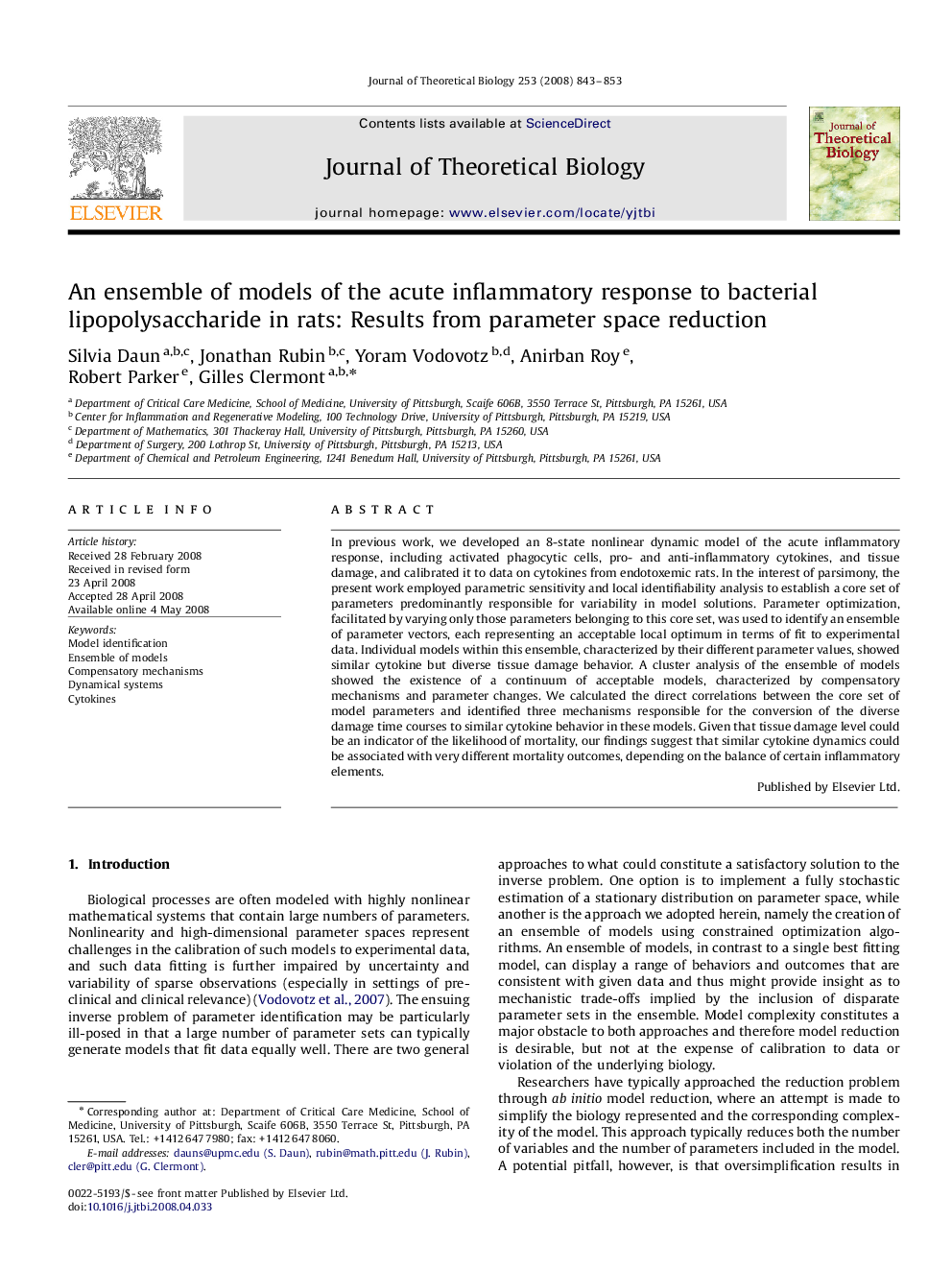| کد مقاله | کد نشریه | سال انتشار | مقاله انگلیسی | نسخه تمام متن |
|---|---|---|---|---|
| 4498332 | 1318976 | 2008 | 11 صفحه PDF | دانلود رایگان |

In previous work, we developed an 8-state nonlinear dynamic model of the acute inflammatory response, including activated phagocytic cells, pro- and anti-inflammatory cytokines, and tissue damage, and calibrated it to data on cytokines from endotoxemic rats. In the interest of parsimony, the present work employed parametric sensitivity and local identifiability analysis to establish a core set of parameters predominantly responsible for variability in model solutions. Parameter optimization, facilitated by varying only those parameters belonging to this core set, was used to identify an ensemble of parameter vectors, each representing an acceptable local optimum in terms of fit to experimental data. Individual models within this ensemble, characterized by their different parameter values, showed similar cytokine but diverse tissue damage behavior. A cluster analysis of the ensemble of models showed the existence of a continuum of acceptable models, characterized by compensatory mechanisms and parameter changes. We calculated the direct correlations between the core set of model parameters and identified three mechanisms responsible for the conversion of the diverse damage time courses to similar cytokine behavior in these models. Given that tissue damage level could be an indicator of the likelihood of mortality, our findings suggest that similar cytokine dynamics could be associated with very different mortality outcomes, depending on the balance of certain inflammatory elements.
Journal: Journal of Theoretical Biology - Volume 253, Issue 4, 21 August 2008, Pages 843–853